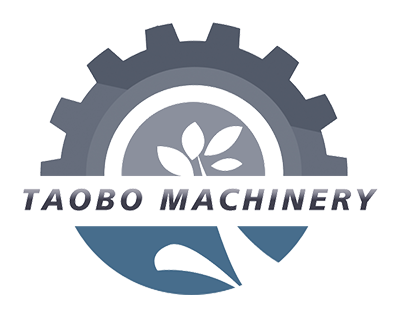In recent years, Pakistani sesame cultivation has achieved a comprehensive upgrade in varieties, technology, and industrial scale through Sino-Pakistani agricultural cooperation. The air-screen cleaning machine, as a key piece of equipment in sesame processing, can significantly improve its quality and processing efficiency.
Sesame Cultivation in Pakistan
Key Cultivation Areas: Sesame is a traditional crop in Pakistan, with Punjab province being the largest sesame-producing region. Sahiwal district is the core area for local contract farming demonstration farms. Furthermore, sesame cultivation has expanded to include northern regions like Islamabad and Rawalpindi, as well as southern regions like Sindh province, thanks to agricultural research institutions, forming a “one core, two wings” cultivation pattern.
Significant Breakthroughs in Varieties and Technology:Previously, local Pakistani sesame varieties suffered from weak resistance, low yields, and significant yield fluctuations. Later, driven by the China-Pakistan agricultural cooperation project, several high-quality Chinese sesame varieties were introduced, yielding over 40% more than local varieties. Simultaneously, three locally adapted varieties were selected, also yielding over 20% more than the control group. In terms of cultivation techniques, traditional methods have been abandoned in favor of bio-nano fertilizers, ridge cultivation, and bio-stubble mulching for no-till farming. These technologies improve water and fertilizer utilization, solve problems like waterlogging and root rot, and have led to the development and publication of Pakistan’s bio-healthy sesame production technology standards.
Key Breakthroughs in Varieties and Technology:The industrial model and export results are impressive: Pakistan currently adopts a new industrial chain cooperation model of “universities (research institutes) + enterprises + farmers,” coupled with a contract farming model of guaranteed production and sales. At present, 12 standardized bio-healthy sesame contract demonstration farms have been established, with a planting area of over 3,000 mu (approximately 200 hectares) and more than 120 contracted farmers. In 2024, the first batch of 3,500 tons of sesame was successfully exported to China, and the export volume is expected to increase to 5,000 tons in 2025. The exported sesame is mainly used in the food, pharmaceutical, and industrial sectors.
The planting scale is gradually expanding: The China-Pakistan cooperative sesame trial planting project was officially launched in 2022. In 2023, the planting area reached over 600 mu (approximately 40 hectares), initially achieving a considerable scale. Subsequently, through the promotion of demonstration farms, the planting area has continued to expand. At the same time, the cooperation has also provided more than 500 long-term jobs for local residents, boosting farmers’ income.
Applications of Air Screen Cleaners
Air screen cleaners combine air separation and vibrating screening technologies, making them significant for processing agricultural crops such as sesame. Specific applications include:
Efficient Removal of Various Impurities: They effectively remove various impurities mixed in with sesame after harvest. First, air separation blows away light impurities such as straw, husks, and weeds. Then, the vibrating screen, with its different mesh sizes, separates larger impurities like clods of soil and gravel, as well as smaller impurities like fine dust. Some models, such as the 5TBDA-7.5FC, also feature a dual air screen structure, allowing for two-stage air separation to thoroughly remove residual light impurities and dust from the sesame seeds.
Grading and Quality Improvement:By changing the screen size and adjusting the number of screen layers, the vibrating screen can separate sesame seeds into different grades, such as large, medium, and small. Furthermore, the cleaned sesame seeds not only have improved purity, but the removal of dust and other impurities also enhances the gloss of the finished product, meeting the high-quality requirements of the food and pharmaceutical industries for sesame raw materials.
Grading and Quality Improvement:Increased processing output and reduced losses: Taking the 5TBDA-7.5FC model as an example, its large screen design increases processing capacity, reaching up to 3 tons/hour for sesame seeds. Furthermore, this equipment solves the problem of high impurity content and loss rates in sesame seeds after mechanized harvesting, reducing material waste during processing and balancing processing efficiency and profitability.
Adaptable to multiple crops and flexible adjustment: In addition to sesame, this equipment can also be used for cleaning crops with high levels of light impurities, such as sunflower seeds, buckwheat, and hemp seeds. Users can adjust parameters such as vibration amplitude and wind intensity, or replace screen plates, according to the characteristics of different crops, to meet diverse cleaning needs and reduce farmers’ equipment investment costs.
As we known, In the raw sesame seeds contain a lot of impurities. Like chaff dust smaller impurities and bigger imourities, and stones and clods and so on, If only use one single and simple cleaning machine, it cannot remove all the dust and impurities So now we need to use the professional cleaning line for remove all the different impurities and dust, stones, clods and so on
In Ethiopia, basically every big sesame exporter will use a sesame processing line to clean sesame seeds, so that their sesame purity will reach more than 99.99 %. The value of their sesame seeds in the market will be higher than that of other countries. Now Pakistan has more and more requirements for sesame production lines.
We are looking for working together with you, and we trust our sesame cleaning line will give more value on your sesame cleaning.
Post time: Nov-14-2025










